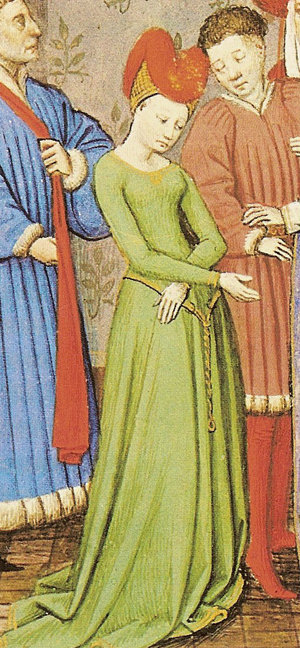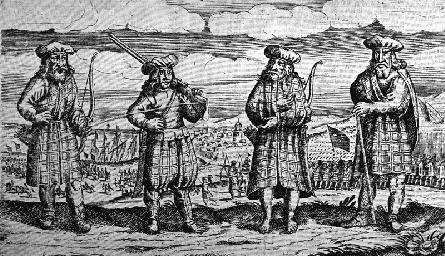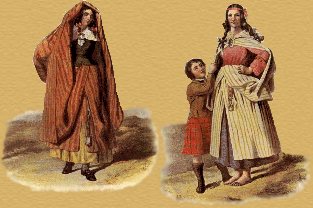Clearly, all of this is a long explanation of why I need to be Princess Merida from Disney'Pixar's Brave.
Part of the reason this project has suddenly occurred to me is this fascinating article over at Clothes on Film. So much went into the animation of these costumes, down to learning how to accurately construct a kilt, and virtually woven fabric for Merida's dress. It made me start thinking about the historical accuracy of the clothes.
So what about a historically accurate Princess Merida outfit?
 |
| A similar, real-life style: Princess Anne of Denmark, 1685 via the Scottish National Gallery |
Some things will be easy to adapt: Merida's dress is supposed to be dark blue linen, with a wool cape. Both natural fabrics, they make a lot more sense than the shiny stuff the Disney World Merida wears--although she is super cute.
 |
| Disney World's look-a-like Merida actress. Darling, but sooo shiny |
I tried dating the film beyond "Ye Olde Highland Stereotypes," but it was pretty difficult. Merida's dress appears to be heavily inspired by a basic kirtle shape, which was worn in various parts of the western world for a very long time; the specific style Merida's resembles (with no waist seam) is accurate for at least the 12th-15th centuries, but also looks a bit like the 17th century portrait above.
 |
| a period illustration of a kirtle |
It was however a bit easier to narrow down the time period based on the men's clothing in the movie. The men all wear kilts with a piece fastened across the chest over the shoulder, which makes it appear to be actually a "belted plaid," or feileadh mor in Gaelic. This was formed from a single cloth which created the pleated bottom and shoulder piece. This existed at least as early as the 16th century, which would place Brave in the 16th or early 17th century.
 |
| foreign illustration of belted plaids |
 |
| King Fergus |
While peasants (and the Highlands were a mostly agrarian society) were often behind high high fashions of any given period, there is more debate in the literature about what Scottish royalty wore. Given that the movie is certainly set before the Union of 1707, I think it is fair to assume that while at home Merida is not dressed in highest court fashions. With all of this in mind, and the fact that I have at least one portrait of a princess in a dress similar to both Merida's dress and a kirtle from the 17th century, I'm going for that as my basic style. I also quite like this portrait, which is from the 15th century.
 |
| 1484 illustration of Joan of Arc at the stake |
Here Joan is wearing what appears to be a front-lacing kirtle and quarter or half sleeves. With this in mind, to get the look of Merida's gown I will follow the character's laced from and cheat a bit on the sleeves. If I make a dress with sleeves like Joan's, but add ties for more sleeve pieces, I can get the jointed-sleeve Merida look, but take them off and hide the ties if I ever want to look more accurate.
The only other thing Merida's costume lacks is an essential part of the 15th-century Gaelic woman's wardrobe: a plaid or arisaid worn over the top of the outfit. These were either attached at the belt or fastened similar to a man's plaid with a brooch on the chest. This could be pulled over the hair, which was probably a great idea given how cold it gets in Scotland.
 |
| 19th century illustrations of the arisaid |
I would describe what Merida wears as a hooded cloak, but the idea is similar. Several sources I read also proposed that the woman's arisaid was not always plaid, but often solid with a colored border or striped. That would mean adding a colored border to Merida's cloak and fastening it with a brooch (which it appears to do already) makes it a passable alternative to a real arisaid--especially if the hood isn't a separate sewn and attached piece.
I suppose this means I need to start looking for dark blue linen...and also that I am a crazy person. Onward to NY Comic-Con!


Just popping on to let you know that even though the fashion is all over the place, Brave takes place in 10th century Scotland
ReplyDelete